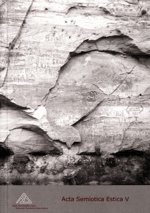Kuidas (mitte) võrrelda inimesi ja loomi
How (not) to compare humans and animals
Author(s): Silver RattaseppSubject(s): Semiotics / Semiology
Published by: Eesti Semiootika Selts
Keywords: human-animal relations; human nature; dualism; biology; evolution; signification; inimese–looma suhe; inimloomus; dualism; bioloogia; evolutsioon; tähendusloome
Summary/Abstract: Comparison and differentiation of humans and animals is common in various philosophical discussions, being frequently the very defining element for certain issues, such as animal rights and human nature. The making of this distinction itself is, however, frequently glossed over. The paper surveys customary ways of distinguishing humans and animals and indicates several problems and contradictions lying therein. In making such distinctions, there is a frequent attempt to find, in humans, a singular key element that would work as the definitive Rubicon which humans alone have crossed. The most commonly cited solely human characteristics that could function this way are tool-making, culture and symbolic language. The paper argues that the very search for such key elements is contradictory in several respects, being based on problematic rhetorical devices and conceptual confusions. It is indicated that some of the more habitual ways of distinguishing humans from animals are based on lifting humans above the natural world and opposing them to any and all living beings as a whole – that is, on a dualistic separation of nature and culture. This confusion results if one accepts the notion of an unchanging biological human nature upon which culture is added as a separate layer or substrate.
Journal: Acta Semiotica Estica
- Issue Year: 2008
- Issue No: 5
- Page Range: 195-206
- Page Count: 12
- Language: Estonian

